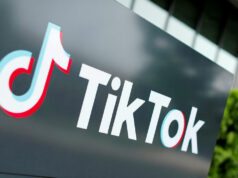THE World Bank Group has approved a $400-million development policy loan (DPL) meant to promote competitiveness, enhance fiscal sustainability and strengthen financial resilience against against natural disasters.
In a statement Wednesday, the World Bank also said its board has published a new country framework for the 2019-2023 period which outlines the bank’s lending program.
The newly approved DPL can be used to support reforms for sustained growth based on the country’s development plan, such as streamline services, establish an ID system, enhance financial services and strengthen management of public assets and fiscal risks to impacts of climate change, the multilateral lender said.
Meanwhile, its new Country Partnership Framework (CPF) for the Philippines for 2019-2023 prioritizes investment in human capital including health and education, competitiveness and job creation, peace-building and disaster resilience.
“With the new Country Partnership Framework, the World Bank Group renews its commitment to support the Philippines by mobilizing financing, global knowledge and technical expertise to support reforms and programs that help speed up poverty reduction and promote greater inclusion,” Victoria Kwakwa, World Bank’s vice-president for East Asia and the Pacific, was quoted as saying.
In a document, World Bank said the new CPF has an indicative average lending program of $1.5 billion annually during the period.
Next year’s borrowing plan could amount to $1.34 billion, the bulk of which or $900 million will go to programs meant to improve the country’s resilience in the face of natural calamities.
For 2021 and 2022, the programmed loans could range within $2.88 billion to $3.08 billion. Of which, $800 million are meant to fund programs for natural disaster risk management through DPL while IPF loans could reach up to $2.28 billion.
Programs under its Investment Project Financing (IPF) include the Seismic Resilience and Emergency Management Project, Sustainable Tourism Project, Marawi Reconstruction and Rehabilitation Project, National Community Driven Development Project Additional Financing, Marikina Dam Project and Agus Pulangi Hydro Rehabilitation Project, among others.
“The bank will work closely with counterparts to promote continued strong engagement during the transition between the current and subsequent administration,” it said in the document.
“The new Country Partnership Framework aims to help overcome the core constraints that continue to hamper the country’s efforts to address the remaining vulnerability of many Filipino families,” Mara Warwick, World Bank country director for Brunei, Malaysia, the Philippines and Thailand, was quoted in the statement.
“The Philippines can deepen inclusive growth and broaden shared prosperity by tackling child malnutrition and learning gaps in education; promoting policies that create more and better jobs for Filipino workers; and focusing on the dual risk of conflict and natural disasters that hurt poor communities,” Ms. Warwick added.
Meanwhile, the bank noted that the country’s goal to graduate to upper middle-income status by next year “will likely reduce access to concessional financing from several development partners.”
“Looking ahead, as access to concessional financing tapers down in the country, the relevance of leveraging private financing for development will grow,” it added.
World Bank said the Philippines has a total net commitment through its official development assistance (ODA) portfolio of $14.5 billion as of end-September 2018.
Japan remained to be the largest ODA source last year with $5.98 billion in loans and grants, followed by the World Bank and the Asian Development Bank, respectively.
“Bilateral partners have included the USA, Australia, Japan, China, South Korea, Germany, Canada, New Zealand, Spain, Italy, and France among others. In terms of grants, the US, Australia, and the UN System together accounted for 71% of ODA grants,” it said. — Beatrice M. Laforga



